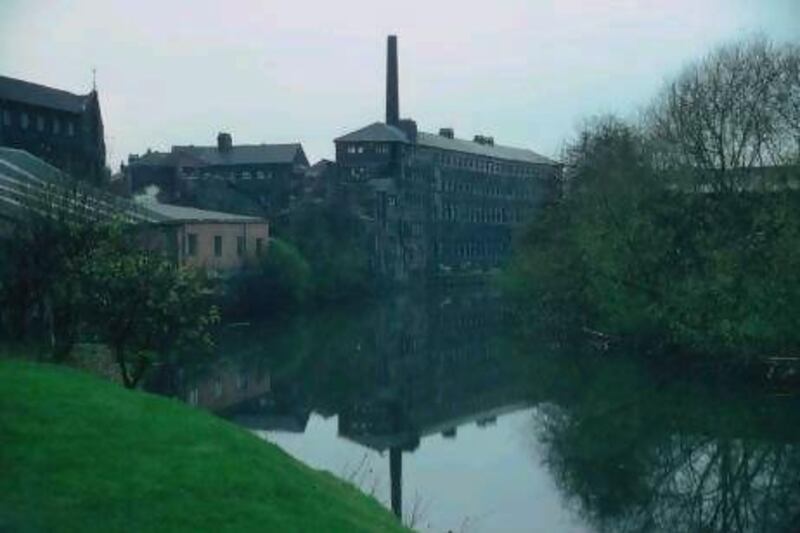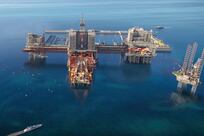SHEFFIELD // When they first broke ground in 2010 for a research centre at this old coal pit in northern England, nuclear power seemed like just the thing to revive the fortunes of a steel town in decline.
Sheffield, once so synonymous with steel that Geoffrey Chaucer referred to a piece of cutlery made in the city in The Canterbury Tales, had been eclipsed in the 20th century by bigger producers further east in Asia.
Nuclear energy, on the other hand, was at the start of the 21st century enjoying what observers deemed a renaissance, with the British government planning its first new reactors in more than two decades.
The national and European Union governments along with companies including Rolls-Royce and Areva committed more than £33 million (Dh190.4m) to the Nuclear Advanced Manufacturing Research Centre, a test factory to perfect the making of steel parts such as valves and 25 metre pressure vessels. Its developers optimistically named rooms after planned reactors at places such as Hinkley Point in South west England.
But on the heels of nuclear and financial meltdowns, the United Kingdom's nuclear manufacturing research centre was completed just in time for one of the most uncertain periods in atomic energy's history. The official opening in May came in the same month Hinkley Point C, the first of the new reactors and the centre's first target market, was put on delay.
The reaction of the centre? A shift in focus to sectors such as wind and oil and gas - the very thing nuclear was meant to replace.
"For sustainability reasons we have to look beyond just the nuclear sector," said Stephen Court, the centre's operations director.
"When we were set up our mandate was around nuclear new build. Over the next 25 to 30 years, the nuclear decommissioning market is probably of a similar size."
Non-nuclear work accounts for more than a quarter of the research, which is undertaken at the request of the member companies. One project examines how to make better castings for aluminium can-making machines.
The adaptations at the research centre reflect a shift throughout the industry after the meltdown in March last year at Japan's Fukushima Dai-Ichi plant, which pushed Germany, Italy and Switzerland to swear off atomic energy and nations such as the UK to delay dates for new plants amid financial concerns.
Areva, the French nuclear giant, has had €400m (Dh1.86 billion) worth of contracts cancelled after Fukushima and executives say it is looking to the decommissioning market.
German utilities are suing their government for €15bn in damages over the decision to abandon nuclear energy earlier than planned.
Worldwide, nuclear growth is to slow by 10 per cent, according to a study released last month by the Organisation for Economic Co-operation and Development's Nuclear Energy Agency.
The corollary has been a closer alignment with oil and gas. In the UK, politicians are pushing for controversial practices such as shale gas exploration, while Germany plans to build or revamp 17 coal and 29 gas-fired power stations to meet the gas left by nuclear power.
But the centre in Sheffield is not abandoning research on nuclear energy.
The total nuclear market over the next 25 to 30 years is forecast to come to about £1.7 trillion, with the mechanical and heavy components the centre works on accounting for a third of that, says Mr Court.
"If the UK could capture 1 per cent of that it's quite significant," he says.
On the factory floor, a hulking machine hummed as it carved heavy steel discs, while other machines were dedicated to perfecting the art of milling, drilling and casting.
The idea is that by developing methods to make sturdier parts quicker, member companies including France's Areva and Westinghouse of the United States can fare better against newer market entrants from Asia.
In 2009 Korea Electric Power Corporation, South Korea's state nuclear company, beat Areva and General Electric to win the UAE's US$20bn (Dh73.46bn) contract for four reactors and now it hopes to sell the UAE another four. Meanwhile, China National Nuclear Power aims to raise $27bn in an initial public offering in Shanghai and plans to export its reactors to developing nations, which have been more willing to stick by nuclear after Fukushima.
Just off the main factory at the Sheffield centre, a dark room holds a virtual reality cube, where visitors wearing special glasses can step into a holodeck-like space to examine a projected 3D model of a Fukushima reactor.
It is shown as it was before the accident - intact.





